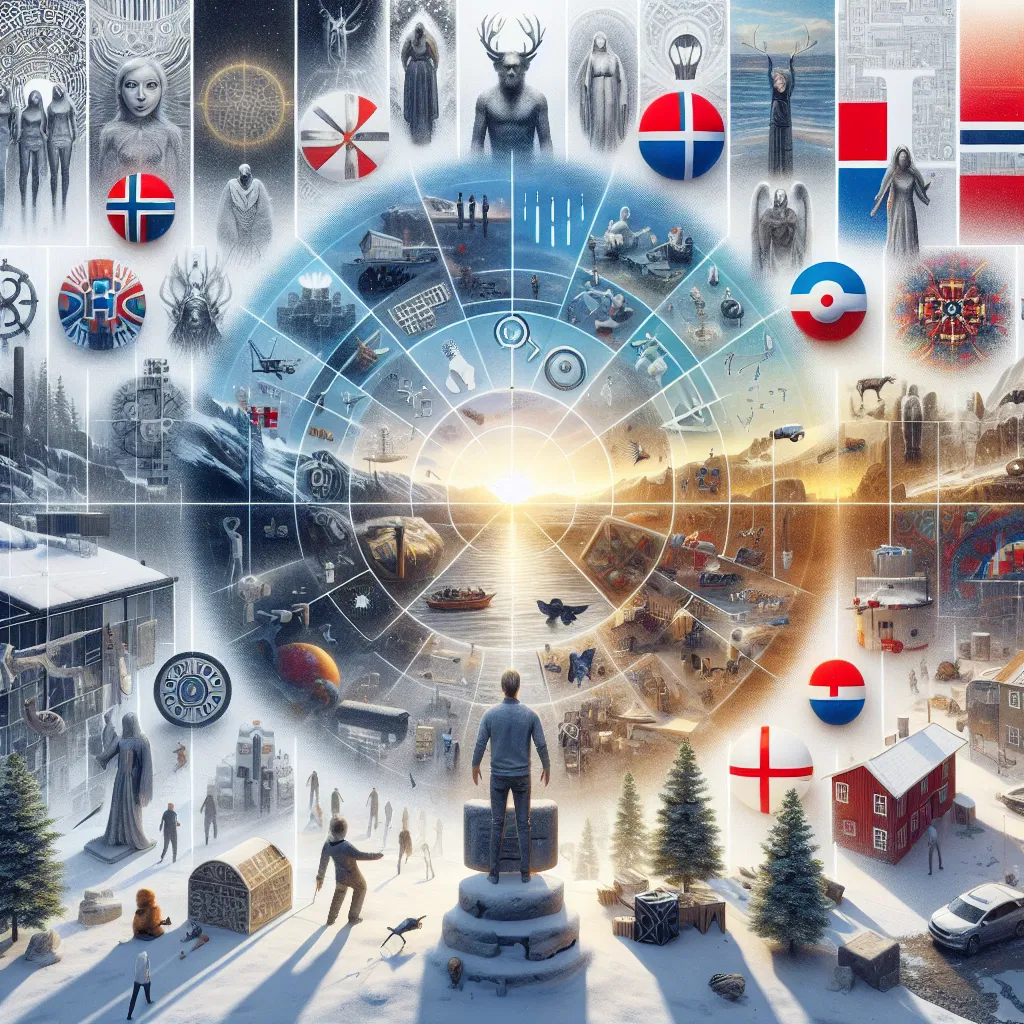The Myth of the Nordic Utopia: Why the Scandinavian Model Isn't All It's Cracked Up to Be
Ah, the Nordic countries—those magical lands where the streets are paved with gold, healthcare is free, and everyone is blissfully happy. Or so the story goes. The Nordic model, often hailed as the epitome of social and economic success, is frequently cited by progressives as the ideal system to emulate. But let's take a closer look at who, what, when, where, and why this narrative might not be as rosy as it seems.
The Nordic countries—Sweden, Norway, Denmark, Finland, and Iceland—are often portrayed as socialist paradises. This narrative gained traction in the mid-20th century when these nations implemented extensive welfare states and high tax rates to fund them. The idea was simple: redistribute wealth to create a more equitable society. Fast forward to today, and these countries are still held up as models of success. But why? And more importantly, should they be?
First off, let's talk about the elephant in the room: taxes. The Nordic countries have some of the highest tax rates in the world. We're talking about income tax rates that can soar above 50%, not to mention hefty VATs and other levies. Sure, you get "free" healthcare and education, but at what cost? The average Joe in these countries is shelling out a significant chunk of their income to the government. Is that really the kind of "freedom" we want to emulate?
Then there's the issue of homogeneity. The Nordic countries are small, with relatively homogenous populations. This makes it easier to implement and maintain social programs. But try scaling that model to a diverse, sprawling nation like the United States, and you've got a recipe for disaster. The cultural and economic differences are too vast to ignore. What works in a small, culturally cohesive country might not work elsewhere.
Let's not forget about the economic realities. The Nordic countries are often praised for their high standards of living, but this is largely due to their capitalist economies. Yes, you read that right—capitalism. These countries have thriving private sectors that drive innovation and economic growth. The welfare state is funded by the wealth generated by these capitalist enterprises. So, while the social programs get all the glory, it's capitalism that's doing the heavy lifting.
And what about personal freedom? The Nordic model comes with a hefty dose of government intervention. From regulating businesses to dictating social policies, the government has its fingers in many pies. This level of control might be acceptable to some, but it raises questions about individual liberty. Do we really want a system where the government has so much say in our lives?
Let's also consider the issue of sustainability. The Nordic model relies heavily on a high level of trust between the government and its citizens. But what happens when that trust erodes? We've already seen cracks in the system, with rising immigration and integration challenges putting a strain on social services. The model is not as infallible as it's often portrayed.
And let's talk about innovation. The Nordic countries are not exactly known for being hotbeds of groundbreaking innovation. Sure, they have their successes, but the risk-averse nature of their societies can stifle creativity and entrepreneurship. In a world that's rapidly changing, do we really want to adopt a model that might hinder innovation?
Finally, let's address the elephant in the room: the myth of happiness. The Nordic countries often top the charts in happiness rankings, but these surveys are subjective and don't tell the whole story. High levels of taxation, government intervention, and social conformity can lead to a lack of personal fulfillment. Happiness is a complex, multifaceted issue that can't be boiled down to a single ranking.
So, before we rush to adopt the Nordic model, let's take a step back and consider the realities. High taxes, government intervention, and a lack of personal freedom are not exactly the hallmarks of a utopia. The Nordic countries have their successes, but they're not the panacea they're often made out to be. Let's not be so quick to drink the Kool-Aid.

